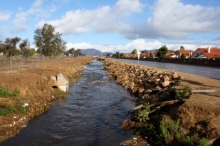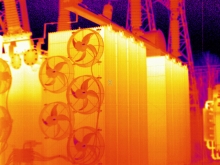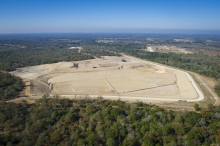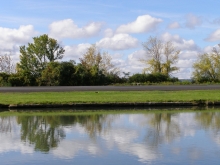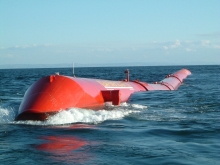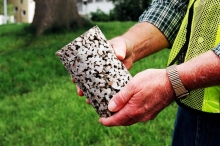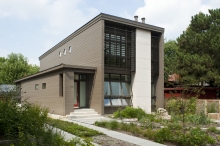In September 2011, publisher Rizzoli New York released The Glass House, a photo tour of Philip Johnson’s famous estate. The book includes text by Philip Johnson himself and by architecture critic Paul Goldberger, and is the official Glass House book of The National Trust for Historic Preservation. Robin Hill’s photo “Glass House Dawn” was selected to appear on the book’s cover.
Below is the final piece of a three-part installment wherein Robin Hill shares his experience of photographing the Glass House estate. View Part One and Part Two for the rest of the story.
My journey continues in its roundabout way, and I am now upon a gate, the likes of which I have never seen before. It is most unusual. I try to find a historic connection to its design but find none. What I do find is a beautifully scaled, welcoming structure that entices one to enter. It is everything that an entrance way to a gated community is not. Even when the barrier is down, it feels open. The Pillars rise high on both sides and are painted a welcoming tone of brown, quite different from the brown that smothers the library. Slung low across the bottom quarter is a brushed aluminum tube that splices the composition perfectly, both in terms of its height and its color. The gate is also quite a trick of visual play, as it actually consists of four pillars, not two as it appears from the full frontal view. The pillars on either side stand back to back with their identical twins behind them. This is a very clever way of hiding the mechanism that lifts and lowers the gate. The wires are hidden from the front view and delicately balance the gate between the two pillars. The engineering is sublime and gives a gentle equipoise to the whole structure. There are not enough Os in the word "smooth" to describe this gate.
